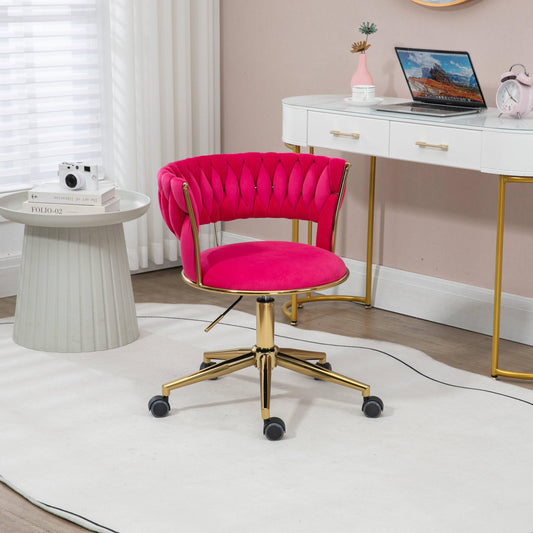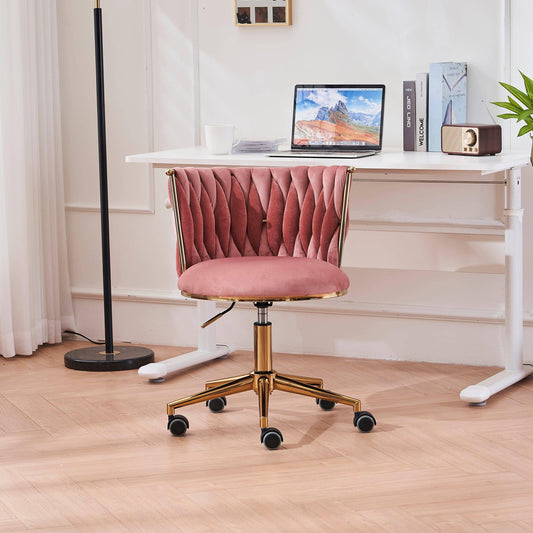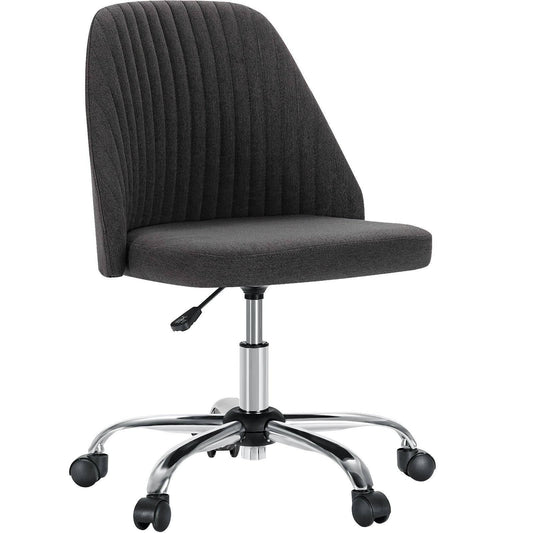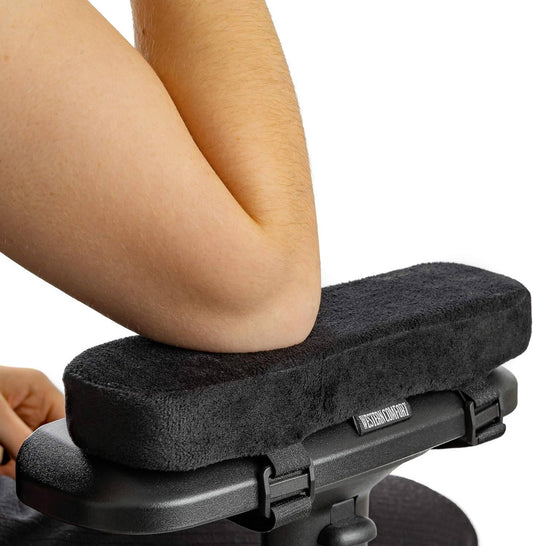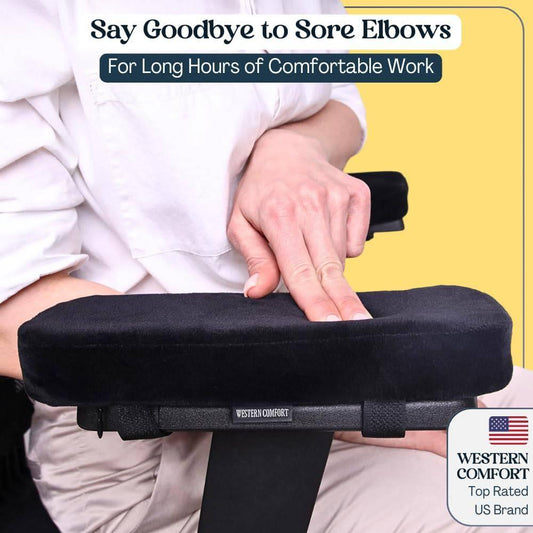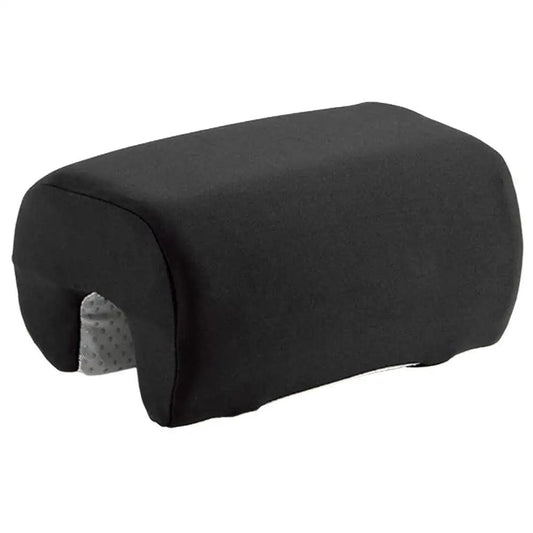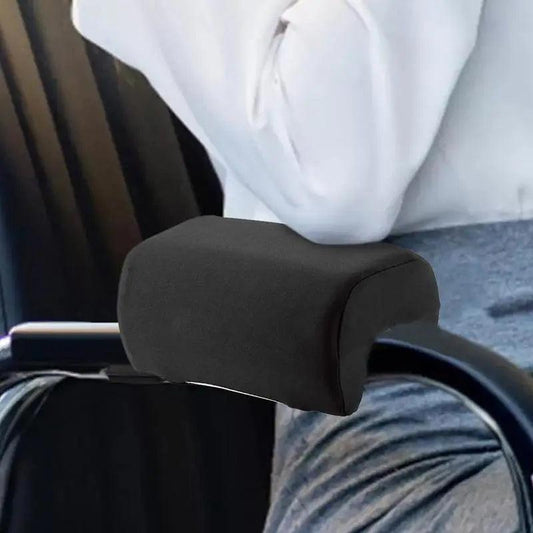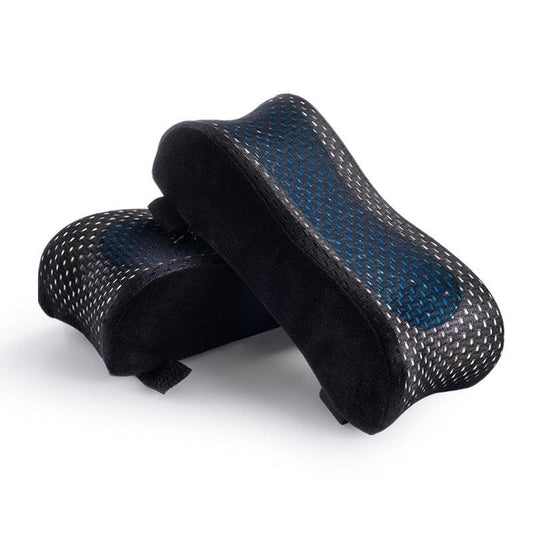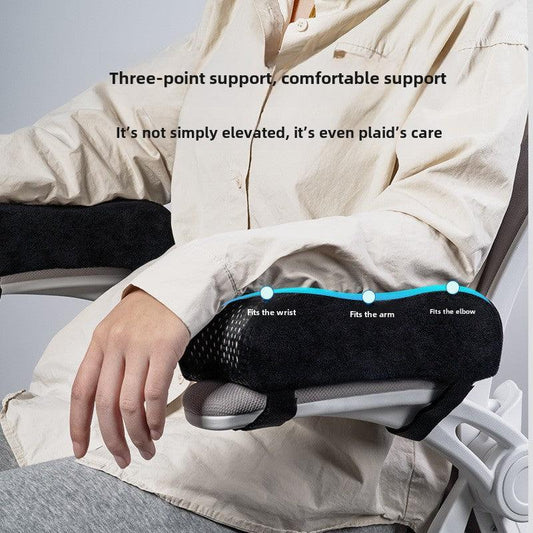La ergonomía importa: Por qué una buena silla de oficina es esencial para la productividad
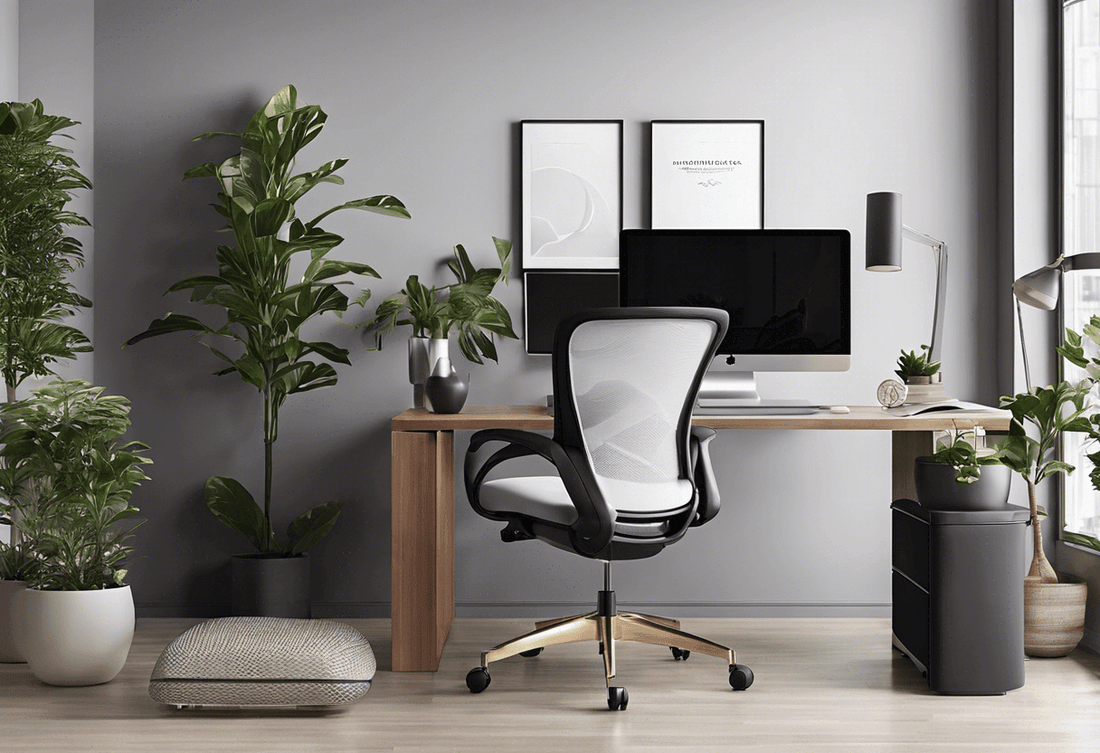
He aquí una descripción general:
- Introducción a la ergonomía y la productividad en la oficina
- La conexión entre la ergonomía y la salud
- Lesiones comunes en la oficina y cómo las sillas pueden prevenirlas
- Características de una silla de oficina ergonómica ideal
- Ajustabilidad: clave para una comodidad personalizada
- El papel del soporte lumbar en las sillas de oficina
- Materiales y calidad de construcción: Invertir en longevidad
- El impacto de una buena silla en el bienestar mental
- Sillas ergonómicas y sostenibilidad a largo plazo en el lugar de trabajo
- Casos prácticos: Empresas que se benefician de las sillas ergonómicas
- Cómo seleccionar la silla ergonómica adecuada para sus necesidades
- Conclusión: El resultado final sobre ergonomía y productividad
Introducción a la ergonomía y la productividad en la oficina
La ergonomía es el estudio del diseño de espacios de trabajo y herramientas que se ajusten a las necesidades del usuario y promuevan la eficiencia. Una oficina bien diseñada puede tener un impacto significativo en la productividad. Los elementos clave de la ergonomía incluyen:
- Ajustabilidad: las sillas, escritorios y monitores deben ser ajustables para adaptarse a distintos tipos de cuerpo.
- Soporte: El soporte adecuado para la zona lumbar y el cuello reduce la tensión y el malestar.
- Disposición: La disposición de los elementos del escritorio influye en la facilidad de acceso y movimiento.
- Iluminación: Una iluminación adecuada reduce la fatiga visual y aumenta el enfoque.
Comprender estos elementos puede conducir a un entorno de trabajo más productivo y cómodo, minimizando la fatiga y mejorando el rendimiento general.
La conexión entre la ergonomía y la salud
La ergonomía afecta directamente tanto la salud física como el bienestar mental. Una postura incorrecta al sentarse puede provocar numerosos problemas de salud:
- Trastornos musculoesqueléticos (TME): un diseño deficiente de la silla a menudo contribuye al dolor de espalda, la tensión del cuello, el síndrome del túnel carpiano y otros TME.
- Problemas de circulación: Una silla que no favorece una postura adecuada puede impedir el flujo sanguíneo, provocando fatiga, venas varicosas y otros problemas circulatorios.
- Fatiga visual y dolores de cabeza: Las posiciones de asiento incorrectas pueden provocar fatiga visual y dolores de cabeza tensionales debido a la altura y distancia inadecuadas de la pantalla.
- Salud mental: El malestar físico puede provocar estrés, ansiedad y reducir el bienestar mental general.
Lesiones comunes en la oficina y cómo las sillas pueden prevenirlas
Los trabajadores de oficina suelen sufrir diversas lesiones debido a estar sentados durante períodos prolongados y a una disposición inadecuada de los asientos. Los problemas más comunes incluyen:
- Dolor de espalda: a menudo es resultado de un soporte lumbar deficiente.
- Distensión del cuello: causada por una posición incorrecta de la cabeza.
- Molestias en la muñeca y el brazo: relacionadas con un soporte inadecuado del brazo.
- Presión en la cadera: Debido al asiento duro y sin acolchado.
- Problemas de circulación en las piernas: Resultado de sillas mal ajustadas.
Una silla de oficina bien diseñada puede proporcionar:
- Soporte lumbar: ayuda a mantener la curva natural de la columna.
- Reposacabezas ajustables: sostienen el cuello y reducen la tensión.
- Apoyabrazos ergonómicos: garantizan que los brazos estén en un ángulo de 90 grados.
- Asientos acolchados: proporcionan una distribución uniforme de la presión.
- Ajuste de altura: garantiza que los pies estén planos sobre el suelo.
Características de una silla de oficina ergonómica ideal
Una silla de oficina ergonómica ideal debe poseer las siguientes características:
- Altura del asiento ajustable : permite a los usuarios ajustar la altura de la silla para que coincida con la altura de sus escritorios, asegurando que los pies descansen planos sobre el piso.
- Soporte lumbar : proporciona soporte para la zona lumbar para mantener la curva natural de la columna y evitar la tensión de la espalda.
- Profundidad y ancho del asiento : se adapta a varios tamaños de cuerpo, con suficiente profundidad para sostener los muslos sin presionar la parte posterior de las rodillas.
- Apoyabrazos ajustables : ubicados para permitir que los hombros y los codos estén relajados en un ángulo cercano a 90 grados.
- Funcionalidad giratoria : permite una rotación suave para acceder fácilmente a diferentes áreas del espacio de trabajo.
- Material transpirable : garantiza la comodidad durante largos períodos a través de una tela transpirable que mantiene a los usuarios frescos.
- Estabilidad de la silla : Equipada con una base estable y ruedas de calidad para facilitar su movimiento sin volcarse.
Ajustabilidad: clave para una comodidad personalizada
Una silla de oficina con alta capacidad de ajuste ofrece la experiencia ergonómica más personalizada. Diversas funciones de ajuste permiten a los usuarios adaptar la silla a sus necesidades específicas:
- Altura del asiento : permite una alineación adecuada con el escritorio y el piso.
- Inclinación del respaldo : permite distintos grados de reclinación para aliviar la presión de la columna.
- Posición del reposabrazos : ofrece apoyo para los antebrazos, reduciendo la tensión de los hombros.
- Profundidad del asiento : se ajusta para garantizar que los muslos estén cómodamente apoyados.
Las sillas ajustables se adaptan a diferentes tipos de cuerpo y preferencias, minimizando el riesgo de incomodidad y mejorando la productividad. Ofrecer a los usuarios la flexibilidad de realizar ajustes sobre la marcha es crucial para una mayor comodidad en el trabajo.
El papel del soporte lumbar en las sillas de oficina
Un soporte lumbar adecuado en las sillas de oficina es crucial para mantener la curvatura natural de la columna. Un soporte lumbar deficiente puede provocar encorvamiento, lo que contribuye al dolor de espalda crónico y a la disminución de la productividad. Los aspectos clave incluyen:
- Alineación anatómica : garantizar que la espalda baja esté apoyada mantiene la curvatura natural de la columna, lo que reduce la tensión.
- Prevención del dolor : Minimizar el riesgo de trastornos y molestias musculoesqueléticas.
- Mayor concentración : es más probable que los empleados permanezcan concentrados y eficientes.
- Ajustabilidad : Las sillas con soporte lumbar ajustable se adaptan a distintos tipos de cuerpo y preferencias personales.
- Beneficios para la salud : Un apoyo adecuado puede mejorar el bienestar general y reducir el ausentismo.
Materiales y calidad de construcción: Invertir en longevidad
Invertir en una silla de oficina de alta calidad implica considerar los materiales y la fabricación para garantizar su durabilidad. Las sillas de alta calidad suelen ofrecer:
- Construcción del marco : generalmente acero o nailon reforzado para un soporte robusto.
- Tapicería : Las opciones incluyen cuero de alta calidad, tela duradera o malla transpirable.
- Acolchado de espuma : la espuma de alta densidad garantiza comodidad sin desgaste rápido.
- Base y ruedas : Las bases resistentes y las ruedas de alta calidad mejoran la estabilidad.
- Mecanismos de ajuste : confiables, a menudo basados en metal para una mayor durabilidad.
"Cuando una silla utiliza materiales de primera calidad, mejora notablemente tanto la comodidad como la vida útil".
La atención a estos materiales garantiza una inversión sostenida en salud ergonómica.
El impacto de una buena silla en el bienestar mental
Una buena silla de oficina puede afectar profundamente el bienestar mental. Una mala postura puede causar dolor físico, lo que genera estrés y reduce la satisfacción laboral. Una silla bien diseñada proporciona:
- Soporte óptimo: Reduce el malestar físico, evitando distracciones e irritaciones.
- Mejora de la postura: mejora la alineación de la columna, reduciendo la tensión en el cuello y la espalda.
- Mayor concentración: minimiza la fatiga muscular, lo que permite una concentración prolongada.
- Reducción del estrés: Ayuda a reducir la manifestación física del estrés, promoviendo un estado mental más tranquilo.
- Mejora del estado de ánimo: una ergonomía adecuada puede mejorar el estado de ánimo general y la productividad, lo que repercute positivamente en la dinámica del lugar de trabajo.
Sillas ergonómicas y sostenibilidad a largo plazo en el lugar de trabajo
Las sillas ergonómicas contribuyen significativamente a la sostenibilidad laboral, ofreciendo beneficios para la salud a largo plazo y mejorando la productividad. Su diseño prioriza la comodidad del usuario, reduciendo el riesgo de trastornos musculoesqueléticos.
-
Beneficios para la salud :
- Postura mejorada
- Reducción del dolor de espalda y cuello
- Aumento de la circulación sanguínea
-
Ganancias de productividad :
- Mayor enfoque gracias a la comodidad
- Menos días de absentismo
- Mayor eficiencia laboral
"Invertir en sillas ergonómicas es invertir en el bienestar de los empleados y en la productividad a largo plazo", afirma la experta en ergonomía en el lugar de trabajo Jane Smith.
Las sillas ergonómicas apoyan iniciativas ecológicas, a menudo fabricadas con materiales sostenibles. Las empresas que adoptan estas sillas demuestran su compromiso con la salud de sus empleados y la responsabilidad ambiental.
Casos prácticos: Empresas que se benefician de las sillas ergonómicas
TechFirm Ltd.
- Aumento de la productividad en un 15%.
- Se observó una disminución del 25% en los dolores de espalda reportados entre los empleados.
- Las encuestas de satisfacción de los empleados indicaron una mejora del 20% en los niveles de comodidad.
Soluciones creativas Inc.
- Se redujo el ausentismo laboral en un 10% debido a problemas musculoesqueléticos.
- Se logró un aumento del 30% en la moral general del espacio de trabajo.
- Las mejoras en el entorno de oficina dieron como resultado un aumento del 40 % en la producción creativa.
FinanceCorp
- Experimentó un aumento del 12% en la eficiencia de los empleados.
- Se observó una caída del 35% en las quejas relacionadas con la ergonomía.
- Los registros de RRHH mostraron tasas de retención de empleados mejoradas en un 18%.
HealthWorks
- Se reportó una mejora del 20% en el bienestar del personal.
- Se registró una disminución del 28% en lesiones en el lugar de trabajo.
- Mejora de la imagen corporativa, lo que se traduce en un aumento del 15% en las solicitudes de empleo.
Cómo seleccionar la silla ergonómica adecuada para sus necesidades
Elegir la silla ergonómica adecuada requiere considerar cuidadosamente múltiples factores:
- Ajustabilidad : asegúrese de que la silla tenga altura de asiento, apoyabrazos y soporte lumbar ajustables.
- Soporte : Busque una silla con soporte lumbar firme para mantener la curvatura natural de la columna.
- Material : Elija materiales transpirables como malla para mejorar la comodidad.
- Profundidad del asiento : El asiento debe sostener los muslos sin presionar detrás de las rodillas.
- Giratorio y ruedas : opte por una silla con giro suave y ruedas duraderas y adecuadas.
- Capacidad de peso : Confirme que la silla pueda soportar su peso.
- Estilo : Considere la estética pero priorice las características ergonómicas.
Conclusión: El resultado final sobre ergonomía y productividad
Optimizar la ergonomía en la oficina impacta directamente en la productividad. Una silla de trabajo bien diseñada favorece una postura correcta, reduciendo la tensión física y la incomodidad. Las sillas ergonómicas reducen el riesgo de trastornos musculoesqueléticos, mejorando el bienestar y la eficiencia de los empleados. Sus principales beneficios incluyen:
- Reducción del esfuerzo físico
- Mayor enfoque y concentración
- Mejores niveles de energía
- Reducir el ausentismo
Invertir en mobiliario ergonómico no se trata solo de comodidad; se traduce en mejoras tangibles en el rendimiento. Al priorizar el diseño ergonómico, las organizaciones pueden fomentar un entorno de trabajo más saludable y productivo, lo que a la larga se traduce en mejores resultados empresariales.

